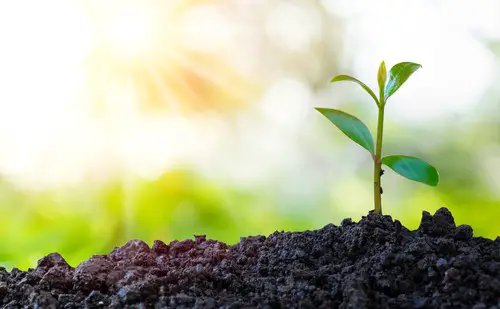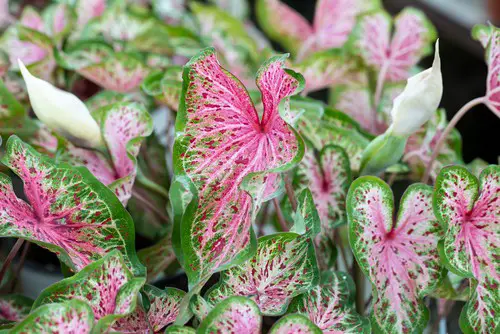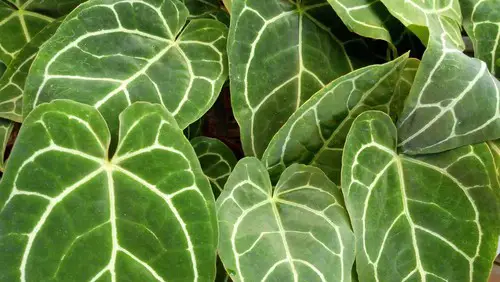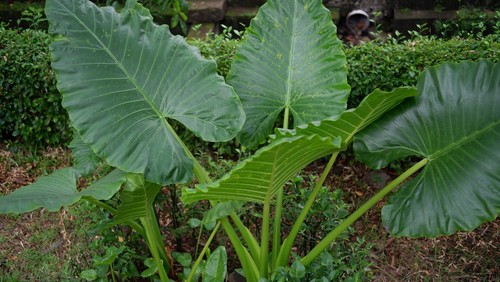Elephant ear plants are a popular houseplant due to their large, vibrant leaves that add a tropical touch to any room. However, if you notice the leaves of your elephant ear plant are turning yellow or brown, it could be a sign that your plant is dying. Understanding the causes of elephant ear plant leaves dying is crucial to save your plant’s life.
Overwatering is one of the most common causes of elephant ear plant leaves dying. These plants are native to tropical climates and require moist soil, but they cannot tolerate excessive amounts of water.
If the roots of your elephant ear plant are sitting in water for too long, they can become waterlogged and start to rot. On the other hand, if you underwater your plant, the leaves will start to wilt and turn yellow or brown.
Key Takeaways
- Overwatering is a common cause of elephant ear plant leaves dying.
- Elephant ear plants require the right amount of sunlight to thrive.
- Regularly inspecting your plant for pests and diseases can help prevent elephant ear plant leaves from dying.
Check out these other related posts:
Understanding Elephant Ear Plants

Elephant ear plants, also known as Colocasia, are a tropical plant native to warm, humid climates. These plants are known for their large, heart-shaped leaves that can grow up to three feet long and two feet wide. The leaves are typically green but can also be variegated with white or yellow markings.
These plants are commonly grown as ornamentals due to their attractive foliage, but they can also be used for food. In some cultures, the tubers of the plant are used as a starchy vegetable.
Elephant ear plants require warm temperatures and high humidity to thrive. They are typically grown in USDA hardiness zones 8-11, but they can also be grown indoors in cooler climates. These plants prefer moist, well-draining soil and should be watered regularly to keep the soil consistently moist.
One of the most common issues with elephant ear plants is leaf yellowing and browning. This can be caused by a variety of factors, including overwatering, underwatering, too much sunlight, or not enough sunlight. It is important to identify the underlying cause of the problem to properly treat the plant
Elephant Ear Plant Leaves Dying – 5 Common Problems
Elephant ear plants are popular houseplants known for their large, striking leaves. However, sometimes these leaves can start to wilt, turn yellow or brown, and eventually die. Here are some common causes of elephant ear plant leaves dying:
1. Overwatering and Underwatering
One of the most common causes of elephant ear plant leaves dying is overwatering or underwatering. These plants are native to tropical climates and require consistent moisture, but too much or too little water can cause stress on the plant.
Overwatering can lead to root rot, while underwatering can cause the leaves to dry out and turn brown.
To avoid overwatering, make sure the soil is well-draining and allow the top inch of soil to dry out before watering again. To avoid underwatering, water the plant thoroughly and consistently, ensuring the soil is evenly moist.
2. Sunlight Issues

Sunlight issues can also cause elephant ear plant leaves to die. These plants prefer bright, indirect light, but too much direct sunlight can scorch the leaves and cause them to turn brown. On the other hand, too little light can cause the leaves to yellow and drop.
To avoid sunlight issues, place the plant in a bright, indirect location, such as near a north-facing window. If the plant is receiving too much direct sunlight, move it to a shadier spot or provide some shade with a sheer curtain.
3. Soil and Nutrient Deficiencies
Elephant ear plants require well-draining, nutrient-rich soil to thrive. If the soil is too compacted or lacks nutrients, the leaves may start to yellow and die.
To avoid soil and nutrient deficiencies, use a well-draining potting mix and fertilize the plant regularly with a balanced fertilizer.
4. Pest Infestation
Pest infestations can also cause elephant ear plant leaves to die. Common pests include spider mites, mealybugs, and scale insects, which can suck the sap from the leaves and cause them to yellow and drop.
To avoid pest infestations, inspect the plant regularly for signs of pests and treat them promptly with an appropriate insecticide.
5. Diseases and Fungal Infections
Finally, elephant ear plants can be susceptible to diseases and fungal infections, which can cause the leaves to wilt, yellow, and drop. Common diseases include bacterial leaf spot and fungal leaf blight.
To avoid diseases and fungal infections, maintain good hygiene practices, such as avoiding overhead watering and removing any dead or diseased leaves promptly. Treat any infections with an appropriate fungicide or bactericide.
Signs and Symptoms of a Dying Elephant Ear Plant
Elephant ear plants are known for their large, lush leaves that can add a tropical feel to any garden. However, these plants can be finicky and require specific care to thrive. If you notice that your elephant ear plant is not looking its best, it may be a sign that it is dying. Here are some signs and symptoms to look out for:
1. Yellowing Leaves
One of the most common signs of a dying elephant ear plant is yellowing leaves. This can be caused by a variety of factors, including overwatering, underwatering, or nutrient deficiencies. If you notice your plant’s leaves turning yellow, it’s important to check the soil and adjust your watering and fertilizing routine accordingly.
2. Drooping

If your elephant ear plant is drooping, it may be a sign that it is not getting enough water or that it is being overwatered. Check the soil to see if it is too dry or too wet, and adjust your watering schedule as needed.
3. Turning Yellow
In addition to yellowing leaves, your elephant ear plant may also start to turn yellow. This can be a sign of nutrient deficiencies, such as a lack of nitrogen or iron. Consider fertilizing your plant with a balanced fertilizer to help it recover.
4. Check the Soil
Checking the soil is an important part of caring for your elephant ear plant. If the soil is too dry, your plant may be underwatered, while if the soil is too wet, it may be overwatered. Adjust your watering routine accordingly to keep the soil moist but not soggy.
5. Brown Leaves
Brown leaves can be a sign of several different issues, including leaf scorch, fungal diseases, or bacterial leaf spot. If you notice brown leaves on your plant, it’s important to identify the underlying cause and treat it promptly.
6. Wilting
Wilting is another common symptom of a dying elephant ear plant. This can be caused by a lack of water or by fungal diseases such as root rot. Check the soil and adjust your watering routine as needed, and consider treating your plant with a fungicide to prevent further damage.
Preventive Measures and Care Tips

To prevent elephant ear plant leaves from dying, there are several preventive measures and care tips that one can follow.
1. Watering
Elephant ear plants are native to tropical climates and cannot tolerate excessive amounts of water. Overwatering is one of the most common causes of death in these plants. To avoid this, make sure to water the plant only when the top inch of soil is dry. Ensure that the soil is well-draining and does not retain water for too long.
2. Light and Sunlight
Elephant ear plants require bright, indirect sunlight to thrive. Prolonged exposure to direct and full sunlight can stress the plant, leading to dehydration, leaf scorch, and leaf tip burn.
Too little sunlight will inhibit the plant’s ability to photosynthesize. Therefore, it is important to place the plant in a location that receives bright, indirect sunlight.
3. Soil and Fertilizer
The soil should be rich in organic matter and have good drainage. Adding an organic fertilizer to the potting soil of your Elephant Ear plant every month is a good practice to follow. It helps avoid problems that lack of nutrients can cause.
4. Humidity
Elephant ear plants thrive in warm temperatures and high humidity. To create a humid environment, one can mist the leaves regularly or place a humidifier nearby.
5. Planting and Hardiness Zones
Elephant ear plants are hardy in USDA hardiness zones 8-11. If planting in a garden, make sure to plant in a location that is protected from strong winds.
6. Neem Oil
If the plant is infested with pests, neem oil can be used as a natural insecticide. It is safe for the plant and the environment.
Reviving a Dying Elephant Ear Plant

If you notice your elephant ear plant’s leaves are drooping, turning yellow, or brown, it might be dying. However, there is still hope to revive it. Here are some tips to save your dying elephant ear plant and help it thrive again.
Check the Roots
The first step to reviving a dying elephant ear plant is to check the roots. If the roots are root-bound or have root rot, it can cause the plant to die. If the roots are root-bound, it means that the plant has outgrown its pot, and the roots are circling around the bottom of the pot.
In this case, repotting the plant in a larger pot with fresh soil can help it recover. On the other hand, if the roots have root rot, it means that the roots have been damaged by overwatering or poor drainage, and they have started to decay. In this case, the affected roots should be removed, and the plant should be repotted in fresh soil.
Provide the Right Environment
Elephant ear plants are tropical plants and prefer warm temperatures. If the plant is exposed to temperatures outside its comfort range, it can become stressed, causing the leaves to droop, turn yellow or brown, and eventually die. Additionally, too much or too little sunlight can also stress the plant.
Elephant ear plants do well with indirect sunlight and can be placed in partial shade. If the plant is not getting enough sunlight, its leaves will start to turn yellow. If it is getting too much sunlight, its leaves will develop leaf scorch and leaf tip burn.
Watering and Nutrient Deficiencies
Drought and dehydration can also cause elephant ear plant leaves to die. On the other hand, overwatering can lead to root rot and other diseases. To prevent these issues, it is important to water the plant according to its watering schedule and ensure that the soil is well-draining.
Nutrient deficiencies can also cause the plant to die. To prevent this, use organic fertilizer or Epsom salt to provide the plant with the necessary nutrients.
Pruning and Repotting
If the plant has dead leaves, they should be pruned to conserve energy for new leaves. Additionally, if the plant is crowded in its pot, it can lead to nutrient deficiencies and other issues. Repotting the plant in a larger pot can provide it with more space to grow and thrive.
Dealing with Pests and Diseases

Elephant ear plants are susceptible to various pests and diseases that can cause their leaves to die. It is essential to identify the cause of the problem to apply the appropriate treatment. Here are some common pests and diseases that affect elephant ear plants:
Pests
Mealybugs
Mealybugs are small, white, fluffy insects that suck the sap from the plant’s leaves, causing them to turn yellow and wilt. They also produce a sticky substance called honeydew that attracts ants. To get rid of mealybugs, wipe the leaves with a cotton swab dipped in alcohol or insecticidal soap.
Aphids
Aphids are tiny, pear-shaped insects that feed on the plant’s sap, causing the leaves to curl and turn yellow. They also produce honeydew that attracts ants. To control aphids, spray the plant with a strong jet of water or use insecticidal soap.
Spider Mites
Spider mites are tiny, eight-legged pests that suck the sap from the plant’s leaves, causing them to turn yellow and dry out. They are difficult to see with the naked eye, but you can identify them by the fine webbing they produce. To control spider mites, spray the plant with neem oil or insecticidal soap.
Diseases
Yellow Leaves
Yellow leaves are a common symptom of many diseases, including overwatering, underwatering, nutrient deficiency, and root rot. It is essential to identify the cause of yellow leaves to apply the appropriate treatment. For example, if the plant is overwatered, reduce watering frequency and improve drainage.
Identify the Cause
Identifying the cause of the problem is crucial to apply the appropriate treatment. Check the plant’s soil moisture, light, temperature, and humidity levels. Also, inspect the plant for pests and diseases. If you are unsure about the cause of the problem, consult with a local nursery or a plant expert.
Thrips
Thrips are tiny, slender insects that feed on the plant’s sap, causing the leaves to turn yellow and dry out. They also produce silver-colored scars on the leaves. To control thrips, spray the plant with insecticidal soap or neem oil.
Conclusion

The elephant ear plant is a tropical plant that requires specific care to thrive. When the plant leaves start to die, it is essential to identify the underlying cause of the problem to address it effectively.
Overwatering is one of the most common causes of elephant ear plant death. The roots of the plant cannot access the oxygen they need to function properly when the soil is overly saturated.
On the other hand, underwatering can cause the plant to wilt and die. Therefore, it is crucial to maintain a balance between watering and allowing the soil to dry out between watering sessions.
Sunlight issues can also cause elephant ear plants to die. The plant may get too much sun or not enough sunlight. If the plant is exposed to too much sun, the leaves may start to turn brown. Conversely, if the plant does not get enough sunlight, the leaves may start to wilt and die.
Frequently Asked Questions
Should I cut off dead elephant ear leaves?
Yes, it is recommended to cut off dead elephant ear leaves. Removing dead leaves can help the plant focus its energy on new growth and prevent the spread of any potential diseases. Use sharp, clean scissors or pruning shears to make a clean cut at the base of the leaf stem.
How do I revive elephant ear plant?
Reviving an elephant ear plant depends on the cause of its decline. If the plant is overwatered, allow the soil to dry out before watering again. If the plant is underwatered, water it thoroughly and consider increasing the frequency of watering.
Ensure the plant is receiving adequate light and humidity. Fertilize the plant with a balanced fertilizer every 4-6 weeks during the growing season.
Why is my Elephant ear leaves turning yellow and brown?
Yellow and brown leaves on an elephant ear plant can be a sign of overwatering, underwatering, or lack of nutrients. Check the soil moisture level and adjust watering accordingly.
Consider fertilizing the plant with a balanced fertilizer. Yellowing leaves can also be a sign of too much direct sunlight, so consider moving the plant to a shadier location.
What‘s the reason behind indoor elephant ear plant problems?
Indoor elephant ear plants can suffer from lack of humidity, insufficient light, and overwatering. To increase humidity, place a tray of water near the plant or use a humidifier.
Ensure the plant is receiving adequate light, either from a bright window or artificial light source. Check the soil moisture level and adjust watering accordingly.
Why is my elephant ear turning yellow after repotting?
Yellowing leaves after repotting can be a sign of transplant shock. Give the plant time to adjust to its new pot and soil. Ensure the plant is receiving adequate light and water it as needed. Consider fertilizing the plant with a balanced fertilizer to help it recover.
Why are my elephant ear leaves drooping and turning brown?
Drooping and brown leaves can be a sign of overwatering, underwatering, or lack of nutrients. Check the soil moisture level and adjust watering accordingly.
Consider fertilizing the plant with a balanced fertilizer. Ensure the plant is receiving adequate light and humidity. If the plant is in a pot, make sure it has adequate drainage.

Hey, I’m Lisa and I’ve been an avid gardener for over 30 years. I love writing, talking and living in the garden! Feel free to connect with me on my socials below


